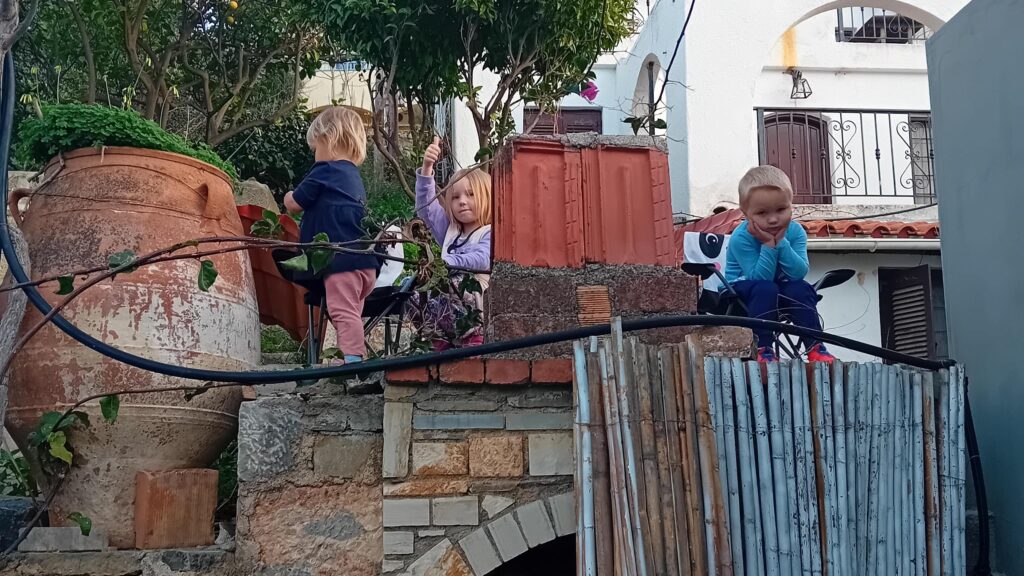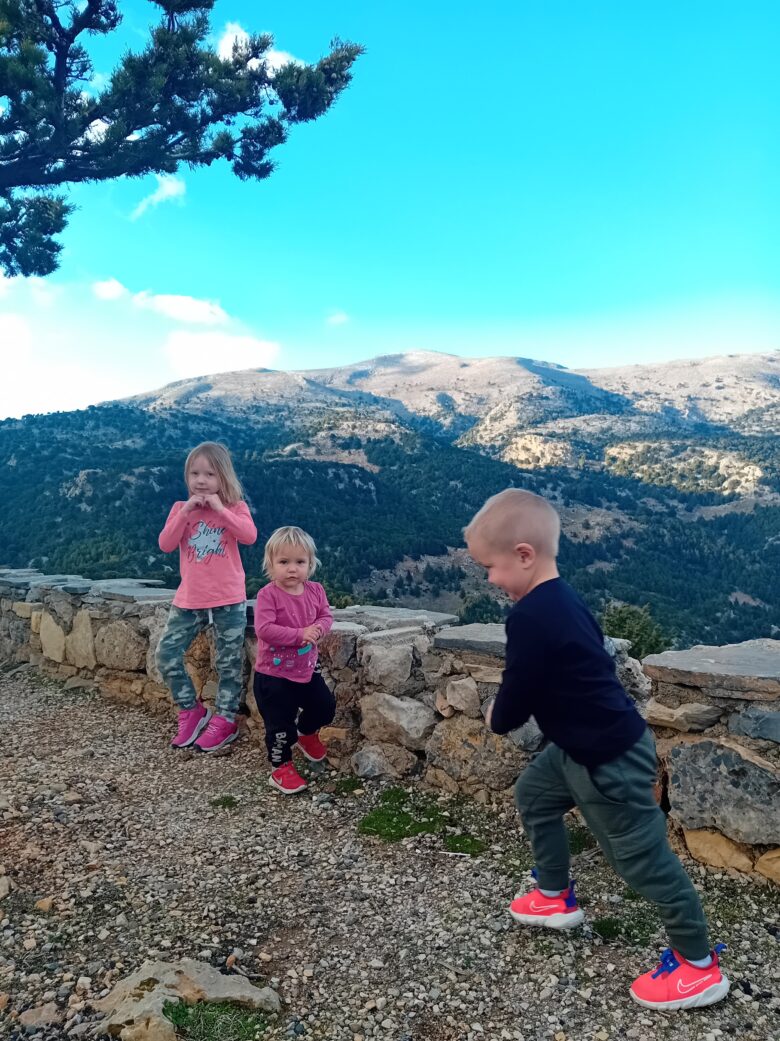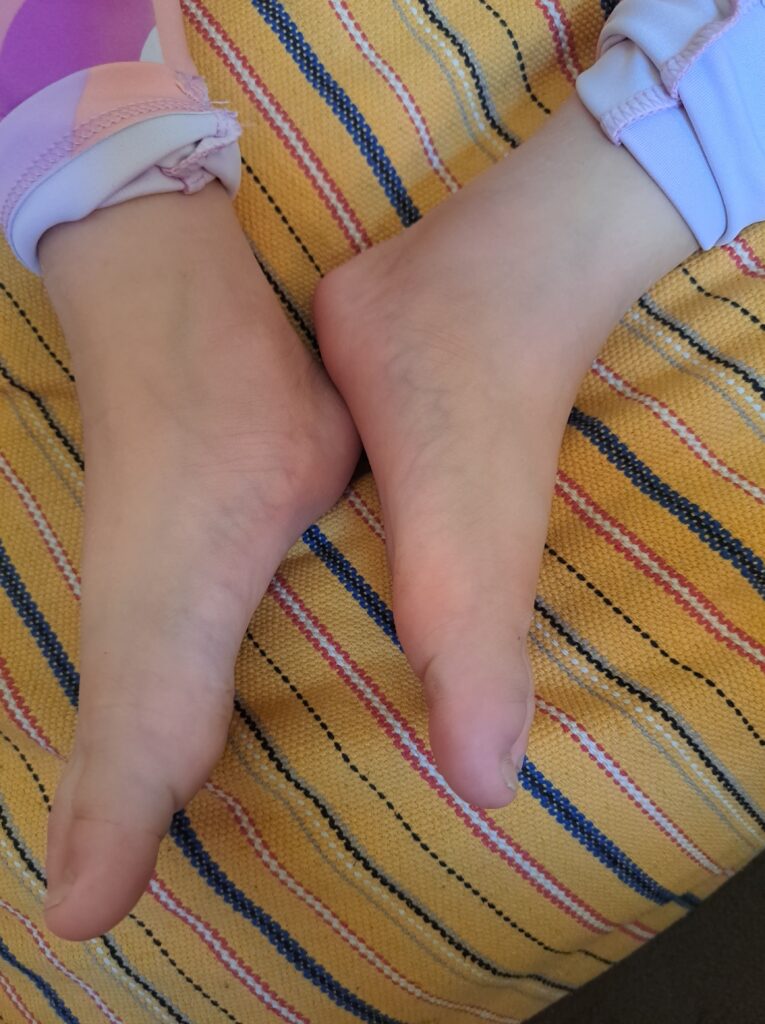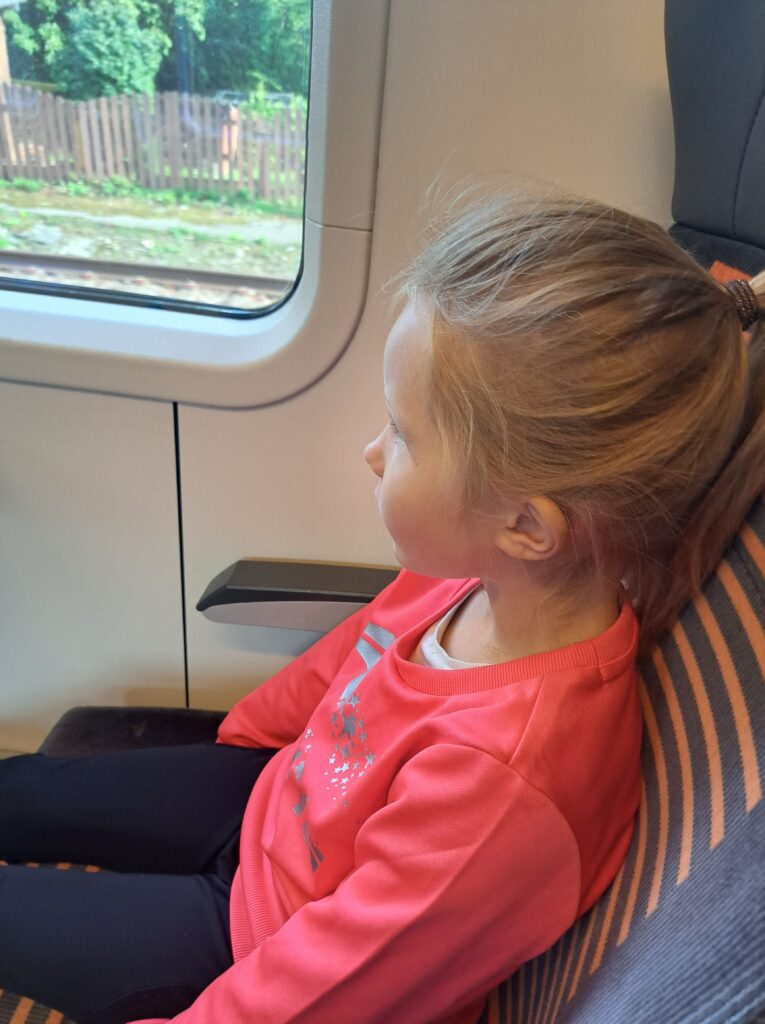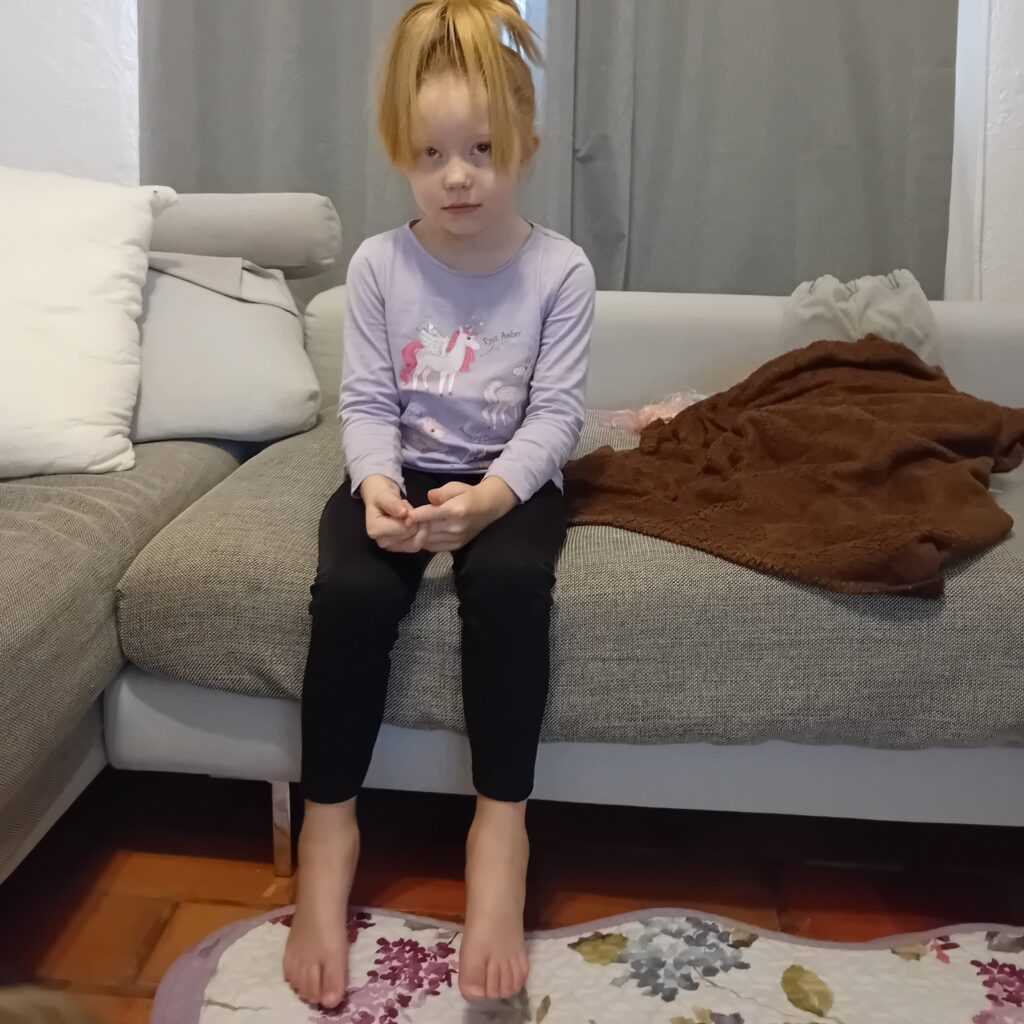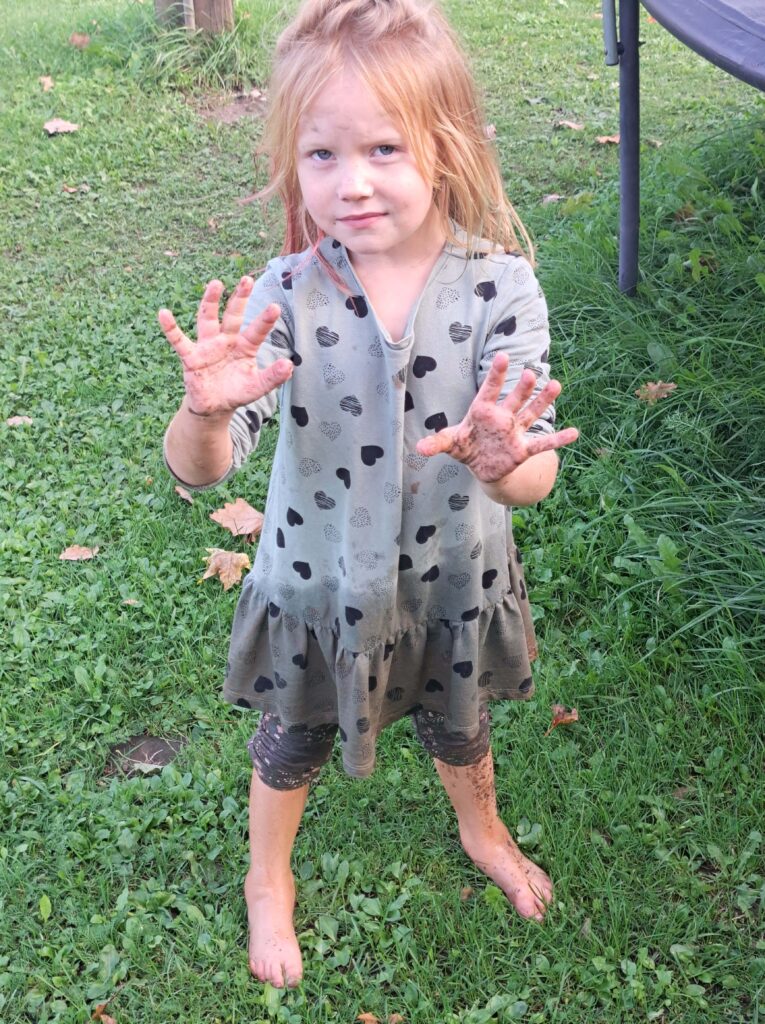One day, my eyes were so swollen that it was difficult to even look outside. My soul had accumulated so many emotions that one evening I simply burst into tears from the depths of my heart until midnight. The most challenging thing in the world is to witness the suffering of your daughter without being able to physically help her as a mother. Now, eight months have passed.
I believe this breakdown came from the realization that in a week, Indy and I have to board a plane and travel to Athens to see the next set of doctors, in the last hope of finding solutions.
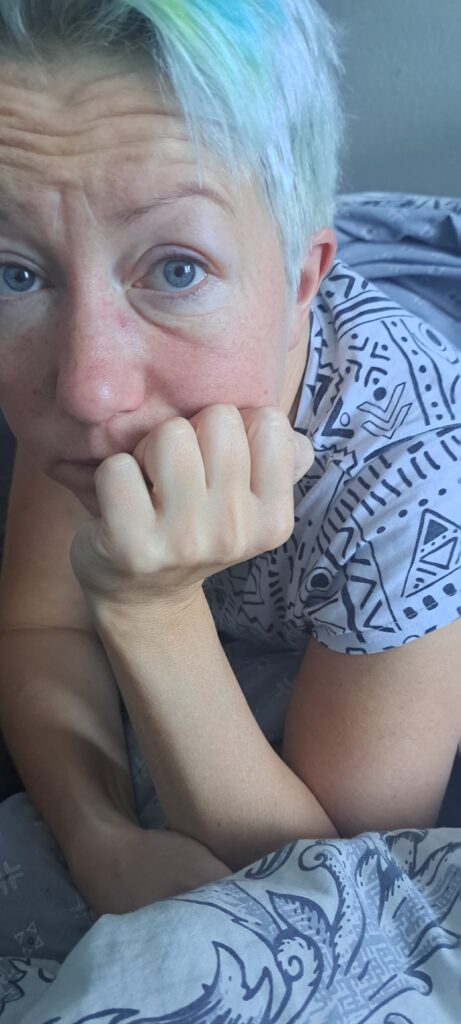
In a previous post, I shared in detail what our daughter is going through, and to this day, we have not found a solution to the issue. Indy still has both ankles swollen, causing difficulty in walking. Any new emerging injury also swells up, but the swelling does not subside.
We arrived in Crete in November, although we had no plans to leave Estonia so quickly. The final straw was when we changed our family doctor, and the new doctor’s only recommendation was not to examine Indy but to give a referral to a neurologist for me. Full of emptiness and disappointment, we left the doctor’s office. We quickly packed our things and just left, as we could no longer stay in Estonia.
In Estonia, the previous family doctor suggested that it could be juvenile arthritis when Indy’s legs had been swollen for a few weeks. According to him, previous injuries were not considered because the legs were not bruised. There was no rheumatoid factor in the blood. A pediatric rheumatologist in Tallinn confirmed this diagnosis without further detailed examinations. She claimed that her experience was sufficient, and additional tests for this diagnosis were unnecessary.
To seek a second opinion, we also consulted a rheumatologist in Tartu who convinced me for three hours that the child has this disease. However, he agreed to perform an ultrasound on the legs, which revealed no changes in the joints. The ultrasound doctor, however, suspected that Indy might have tendon sheath inflammation, which aligns well with his behavior and recurring traumas.
Searching answers from here and there
We visited various places in Estonia to further investigate the issue because the parents’ hearts were not satisfied. We went to a private clinic pediatrician who did not refer us anywhere else and thought that the pediatric rheumatologist at the public hospital would know. We visited a private clinic rheumatologist who simply suggested using the cold treatment chambers he had created. Of course, after he had told us that he doesn’t deal with children, and we had already paid the consultation fee, the conversation or perhaps his self-promotion was considered part of the visit, according to the management of that private clinic. I even asked over the phone beforehand, having read on their website that this rheumatologist also works with children, to confirm the accuracy of the information.
We visited a preventive medicine clinic, where recommendations were given to turn to the following clinics and use our funds to test if Indy might have mold poisoning and to assess the condition of his intestines.
We went to a reflexologist: we paid for the session and were promised a follow-up call to provide solutions, but instead, we received a phone call stating that he couldn’t help us. At least we appreciate the honesty.
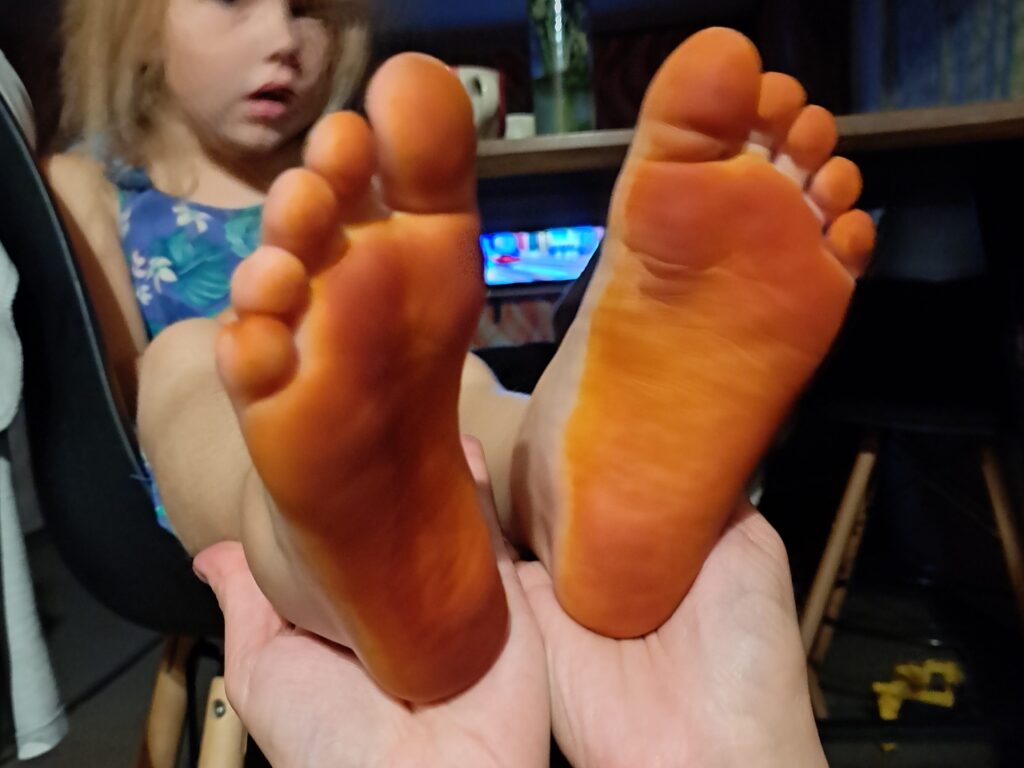
Next, we consulted with a nutritionist. Her information was probably the most useful and practical, as she provided recommendations on what to exclude from the menu and what to eat in order not to feed the inflammation in Indy’s body, as her legs were sometimes warm.
I hadn’t heard much about homeopathy, and I didn’t know exactly what it was. Trying to grasp at every straw, we also turned to a homeopath. Some didn’t want to talk to us for some reason and directed us to the next one. We then found one named Tatjana. We traveled alone with Indy again to the capital, dealing with trains, taxis, etc. We paid eighty euros for a session in her office. We received some strange white beads to take twice a week. We also tried them ourselves; it tasted like glucose. Unfortunately, we didn’t notice any effect from them. In addition, it was very difficult to later get in touch with this woman from Ukraine.
Yeah, the little white pearls
Through acquaintances, we were recommended another homeopath. We went to her appointment. She seemed knowledgeable, and prescribed small pellets again, which this time we had to take three times a day. While initially it seemed like there was some effect, in the long run, they did nothing. We went for another appointment, received the next set of beads, and the so-called treatment plan was adjusted. However, it seemed like the situation had worsened, and after a while, we simply stopped taking them.
As additional information, in Greece, we have received information where, according to Estonian homeopaths, these pellets are very common, and you can get them from any pharmacy, which is not the case at all. As far as they know, these pellets shouldn’t even be sold in Estonia. However, finding the right homeopath in Greece is not as easy. For example, on Crete, there are almost none known.
Why did we change our family doctor? In our area, there is a branch of one of the larger family medical centers. During the summer, our family nurse was replaced by another employee. I had read a brochure on juvenile arthritis prepared by a pediatric rheumatologist from the University of Tartu, which listed the tests needed to diagnose this disease, but these tests had not been done for us. I asked the replacement nurse to take a blood sample and perform these tests. Later, I found out that these tests were quite expensive.
Did it really happen?
Both Indy and I suffer from severe anemia. When we returned in September, they no longer wanted to take blood samples from us. I could barely manage to provide a urine sample for the child.
Sometime later, I received a phone call from the owner of that family doctor’s office. And that phone call was not pleasant. Trying to manipulate me, she made it clear that if I don’t follow their instructions and do what they, as doctors, say, our child will end up in a wheelchair. When our child grows up, she might ask me, “Mom, why didn’t you give me the medicine?” (In other words, the nurse had informed the company owner after our last visit that we hadn’t started taking the prescribed medications yet.)
But what if one day, when our child is an adult, ask me, “Mom, why did you give me those medications?” Because those medications might prevent her from ever becoming a mother. These drugs are not like ibuprofen, which even cause side effects on our child.
Additionally, we had so many questions in our hearts because we weren’t certain about this diagnosis. We felt that our child had been insufficiently examined. Reading about the side effects of medrol and trexan, we simply couldn’t bring ourselves to administer such potent medications to our child. They would need to be taken for at least three years, and they come with powerful side effects.
If it hasn´t helped others, how could it help us?
In addition, we had all the information that reached us after the blog post about Indy. All those letters and phone calls came, detailing how other people in similar situations have faced more problems with the side effects of these medications than the benefits they provide. Naturally, I was confused. Doctors don’t want to talk to you on a personal level, and we have no way to have a normal discussion with anyone about this topic—weighing the pros and cons and assessing our risks.
That company owner simply berated me. At that moment, I decided to leave the matter there.
But it kept gnawing at me. I thought I couldn’t allow someone to speak to me like that. How can a stranger—someone who isn’t even our family doctor within the healthcare system—be so audacious as to call me and say that I’m leaving my child in a wheelchair?
Since that phone call continued to bother me, I wrote a heartfelt letter to the company owner, expressing that the call was extremely rude, and inhumane. I requested that she never call me again. She even uploaded my email to our child’s digital records!
We began searching for a new family doctor. All the lists were full until we finally found a Ukrainian doctor who started working in a location about 40 kilometers away three years ago. Our whole family joined their patient list there.
New Family Doctor: I was hopeful, ended up with frustration
In October, I was involved in a motorcycle accident that resulted in a broken leg. I needed a referral to a surgeon and an X-ray. I also scheduled an appointment for Indy. We went to the doctor’s office with hopes of starting fresh and anew.
In our digital health records, I marked all unnecessary documents as private. I wanted to provide relevant information while keeping the clutter to a minimum.
Sitting across from the doctor’s desk, I tried to share our story, our concerns, and the origins of it all. However, the doctor simply sat at the computer, reading something on the screen, seemingly ignoring me. I asked, “What are you reading there?” His curt response caught me off guard: “Do you think you can hide those documents from me?” My mouth dropped open. He didn’t listen to our worries and instead recommended that I see a neurologist. He was willing to provide a referral for me, but was not willing to further examine Indy. He didn’t even allow me to choose my own surgeon. Instead, he called a friend in Rakvere to slot me in as their patient.
So, if anyone knows of a decent family doctor with available spots on their patient list, our five-member family is once again in search of a new primary care physician.
In summary, this blog post doesn’t cover all the places and avenues we explored to find help for Indy. Conventional medicine can be rigid, often sticking to a diagnosis made without thorough examination. The primary goal seems to be getting patients to take prescribed medications, followed by more medications to manage side effects. We would be valuable clients for pharmaceutical companies and their representatives.
Alternative options exist, but some of them are more focused on emptying your wallet and empathizing with your troubles rather than finding solutions and providing assistance. Whether in conventional or alternative medicine, there are good-hearted individuals on both sides, but the journey to find them can be challenging.
Just couldn´t bear it anymore
Those days and months passed by, constantly googling, seeking advice from acquaintances in the medical field, and exploring different places until we reached the final appointment with our family doctor, which was the last straw. Not to mention the various folk remedies we tried: tea leaves, cabbage leaves, honey, salt, ointments, cow udder salve, and so on. Questions arose: What goals do different medical fields truly serve, and whose interests do they represent? What has become of the doctor’s oath? Is everything really as they try to make us believe? Can we trust everything and everyone?
We felt so stuck that, for the sake of our mental well-being, we decided to pack up quickly and leave, to change our environment. We didn’t have a specific duration in mind, but we needed to go. Everything was left unfinished and undone. Work at the workshop remained incomplete, the bus conversion project was abandoned, but we simply couldn’t bear being in Estonia any longer. Since Indy’s condition had remained stable all those months, we thought, even if it’s just for a month or two, let’s go away. Now we’ve been gone for more than three months, but that’s a story for another time.
